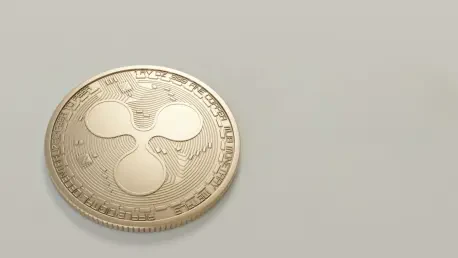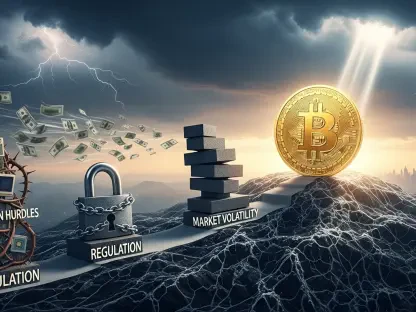What if the key to slashing cross-border payment costs and delays lay in a single, groundbreaking deal? In 2025, Ripple, a titan in blockchain and cryptocurrency solutions, has turned heads with a $200 million acquisition of Rail, a cutting-edge stablecoin payments platform. This isn’t just a business transaction; it’s a bold leap into redefining how money moves globally. With stablecoins gaining traction as a faster, cheaper alternative to traditional finance, this partnership promises to reshape the fintech landscape for businesses everywhere. Dive into the story behind this seismic shift and uncover what it means for the future of payments.
A Transformative Leap in Digital Transactions
The world of international payments has long been plagued by inefficiencies—think hefty fees, sluggish processing times, and complex regulatory mazes. Ripple’s acquisition of Rail marks a pivotal moment in tackling these pain points head-on. By integrating stablecoin technology, which ties digital assets to stable currencies like the US dollar, this deal aims to deliver transactions that are not only rapid but also cost-effective and secure.
Stablecoins are no longer a niche concept; they’re becoming the backbone of modern financial systems. Industry estimates suggest the global B2B stablecoin payments market could hit $36 billion within the next two years, from 2025 to 2027. Ripple’s strategic move to acquire Rail positions it at the forefront of this explosive growth, blending innovation with practicality to meet the demands of businesses worldwide.
This isn’t merely about technology—it’s about solving real-world problems. Companies struggling with cross-border payment delays can now look to a solution that promises near-instant settlements. The excitement surrounding this acquisition lies in its potential to turn a fragmented payment ecosystem into a streamlined, unified network.
Why Stablecoins Are Redefining Finance
Stablecoins stand out as a game-changer in an era where traditional banking often falls short for global transactions. Unlike volatile cryptocurrencies, stablecoins offer price stability by being pegged to assets like fiat currency, making them a reliable choice for businesses. Their ability to operate on blockchain networks ensures speed and transparency, cutting through the red tape of conventional systems.
Ripple recognized this potential early on, and with Rail’s expertise, the company is doubling down on making stablecoin payments mainstream. Rail’s platform simplifies the process, allowing businesses to settle payments quickly without needing to hold or manage crypto assets directly. This addresses a critical barrier for enterprises hesitant to dive into digital currencies due to complexity or risk.
The numbers speak volumes: Rail is projected to handle over 10% of the B2B stablecoin market share by 2027, starting from this year’s baseline. This statistic underscores the immense trust and scalability that stablecoins bring to the table. As financial institutions and corporations increasingly adopt these tools, the Ripple-Rail alliance is poised to lead the charge in transforming global commerce.
Inside the Ripple-Rail Synergy
At the heart of this $200 million deal is a powerful collaboration of strengths. Ripple brings to the table its expansive Ripple Payments platform, which includes a vast payout network, deep digital asset liquidity, and compliance through over 60 regulatory licenses across various jurisdictions. This foundation ensures that transactions meet stringent enterprise standards worldwide.
Rail, on the other hand, contributes cutting-edge innovation with its virtual accounts and automated back-office tools. These features enable businesses to process stablecoin payments effortlessly, with rapid settlements in major corridors like USD, all without the need for dedicated crypto accounts. Their system is designed for simplicity, removing operational hurdles that often deter companies from adopting blockchain solutions.
Together, the two entities are crafting a seamless, always-on global payment system accessible via a single API. Supported by a robust network of banking partners, this unified platform focuses on both pay-ins and pay-outs using stablecoins, setting a new benchmark for efficiency. The synergy here isn’t just additive; it’s multiplicative, with the potential to redefine how enterprises approach cross-border financial operations.
Leadership Perspectives and Market Impact
Ripple president Monica Long highlighted the monumental importance of this acquisition, stating, “Stablecoins are poised to revolutionize global payments, and merging with Rail uniquely equips us to pioneer innovation on a massive scale.” Her words reflect a deep confidence in the transformative power of this technology for the financial sector.
Rail CEO Bhanu Kohli echoed this sentiment, emphasizing the reach of their combined efforts: “Uniting our vision with Ripple’s extensive network allows us to bring groundbreaking solutions to millions of businesses across the globe.” This shared optimism points to a future where stablecoin payments become the norm rather than the exception, driven by a partnership committed to scalability.
Industry analysts bolster these views, noting that stablecoins are fast becoming a cornerstone of financial infrastructure. With projections indicating significant growth in adoption over the next few years, the Ripple-Rail collaboration is seen as a frontrunner. Their integrated approach is already drawing attention from major corporations looking to modernize payment systems, signaling a ripple effect across the entire fintech ecosystem.
Empowering Businesses with a New Payment Framework
For companies grappling with the challenges of international money transfers, the Ripple-Rail platform offers tangible advantages. Businesses can streamline operations by utilizing a single API to manage stablecoin transactions, eliminating the clutter of multiple intermediaries. This approach not only saves time but also reduces costs significantly.
Compliance, often a sticking point in global payments, is addressed through Ripple’s extensive regulatory framework and banking partnerships. With over 60 licenses ensuring adherence to legal standards, enterprises can trust that their transactions meet the highest security benchmarks. Meanwhile, Rail’s support for assets like RLUSD and XRP provides liquidity without the need for specialized crypto accounts.
Scaling globally becomes more feasible with this one-stop solution for blockchain payment rails and secure custody infrastructure. Businesses can expand their cross-border reach with confidence, knowing they have a reliable system backing their financial moves. This ecosystem is designed to empower companies of all sizes, from startups to multinationals, to compete in an increasingly interconnected market.
Reflecting on a Milestone in Fintech History
Looking back, Ripple’s acquisition of Rail for $200 million in 2025 stood as a defining moment in the evolution of digital payments. It marked a bold stride toward integrating stablecoin technology into mainstream finance, addressing longstanding inefficiencies in cross-border transactions. The partnership between these two innovators set a precedent for how blockchain could bridge gaps in traditional systems.
The journey didn’t end with the deal; it sparked a broader movement within the industry to prioritize speed, cost, and compliance. Businesses that adopted the Ripple-Rail platform found themselves ahead of the curve, equipped with tools to navigate global markets more effectively. The impact of this collaboration rippled outward, influencing competitors and regulators alike to rethink payment infrastructures.
As the fintech landscape continues to evolve, the next steps involve sustained innovation and wider adoption of stablecoin solutions. Enterprises are encouraged to explore how blockchain-based payments can optimize their operations, while policymakers might consider frameworks that support such advancements. This historic merger laid the groundwork for a future where financial transactions are not just transactions, but catalysts for global connectivity and growth.









